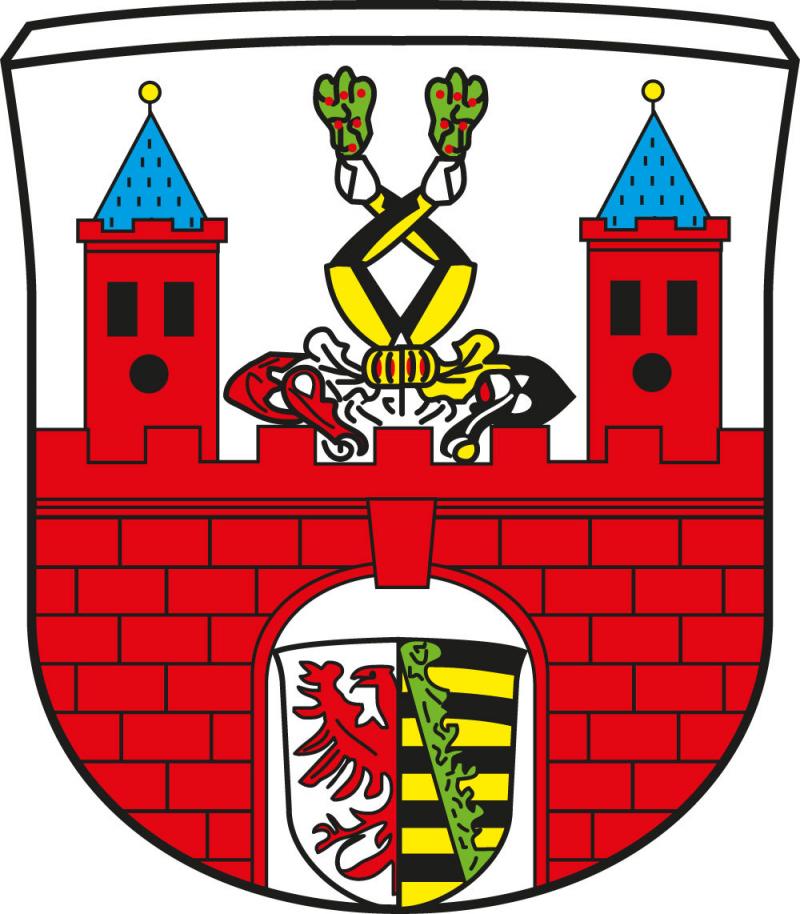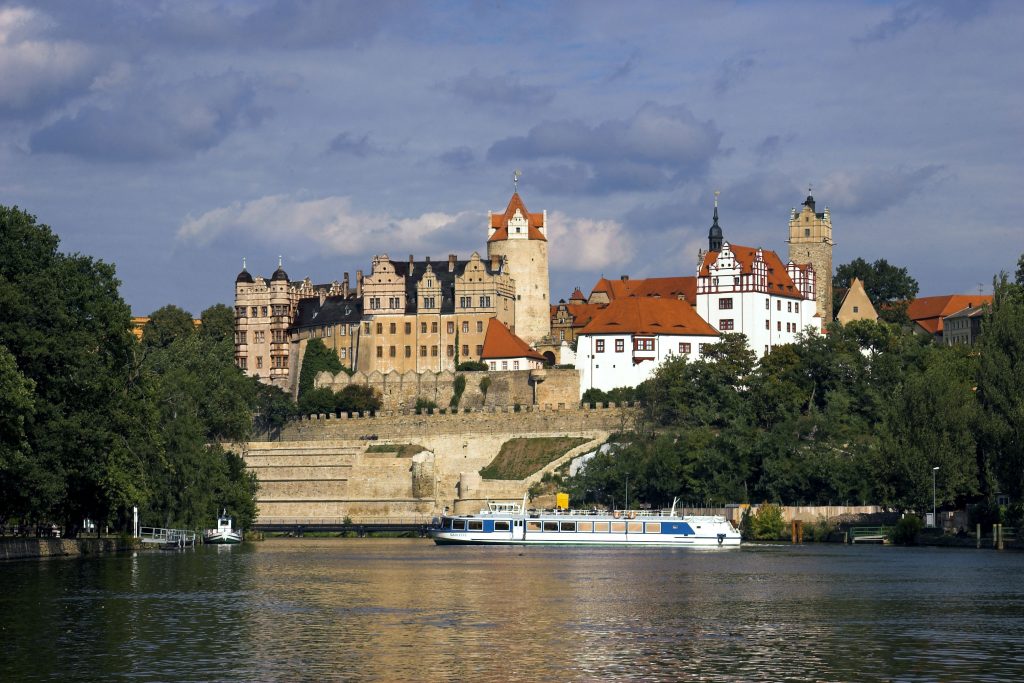
State:
Germany
Federal state:
Saxony-Anhalt
Coordinates:
51° 48′ N , 11° 45′ O
Altitude:
85 m above sea level
Area:
113.47 km²
Population:
32.573 (2019)
Population density:
287 inhabitants/km²
Bernburg
Geography
Bernburg on the lower Saale is centrally located in Saxony-Anhalt. It is geographically bounded by the Harz Mountains to the west, the Magdeburg Börde to the north and the Dessau-Wörlitz cultural landscape to the east. The town is 72 metres above sea level; it is divided into the higher mountain town to the east of the Saale and the valley town on the west bank. It is the district capital of the Salzlandkreis (SLK) with 33,000 inhabitants, a location of the Anhalt University of Applied Sciences as well as an industrial and service centre. Bernburg includes the villages of Aderstedt (550 inhabitants), Baalberge (1363), Biendorf (810), Gröna (554), Peißen (1202), Poley (602), Preußlitz (728) and Wohlsdorf (505).
History
It has been proven that the place called “Brandanburg” in the Ohrdruf document of Emperor Otto I of 29 July 961 is identical with the medieval “Berneborg “, today’s Bernburg an der Saale. First the armies of the Carolingians crossed the town, then the Ottonians, who left border fortifications, and later it experienced trade and change on the old Magdeburg-Halle-Leipzig salt route. Bernburg was mentioned in 1138. The Annalista Saxo reported: “The castle, which is called Berneburch, was burnt down because of the tyranny which the Margravine Eilika exercised from there”. In 1278, the settlements of Alt- and Neustadt were granted town charter. Both communities were united in the middle of the 16th century. It was not until 1825 that the town in the valley (Talstadt) was united with the town in front of the mountain (Bergstadt).
Due to its favourable location on the Saale, shipping was already practised in the 15th century; the wool and grain trade was important. During the Thirty Years’ War, the Swedes captured the town twice, but were finally driven out by the Saxons in 1638. From 1603-1863 the town was the residence (1765) and capital of the princes and later dukes of Anhalt-Bernburg. Until 1918 Bernburg belonged to the Duchy of Anhalt, until 1945 to the State of Anhalt. The government building (1746) on the market square, built by Prince Victor Friedrich, is a magnificent building of the time. The projecting gable shows two bears holding a coat of arms under the prince’s hat.
The tourist “Romanesque Road” has led in the form of a figure eight to the most important monuments of this era in Saxony-Anhalt since 1993. The route was extended in summer 2007. Along about 1000 kilometres of route, there are 80 buildings in 65 towns that belong to the Romanesque period (800-1200). In Bernburg, there are 2 designated stone testimonies to this era, which was marked by the influence of the early Ascanians and their importance in the German Kingdom from the 10th century onwards, a North German feudal dynasty with its ancestral castles in the Harz Mountains – the later Princes of Anhalt.Once, the Romanesque village church of St. Stephani stands in the district of Waldau. The first documents call it the “keulichen” tower.
In the neighbouring town of Nienburg an der Saale, another noteworthy monument on the “Romanesque Road” is the monastery church of St. Mary – St. Cyprian. The attentive visitor will find other Romanesque elements in Bernburg’s architecture. For example, the remains of a castle chapel of St. Pancras on the hall side of the castle and the remains of an old circular wall on Schlossstraße. The castle church of St. Aegidien also stands on Schlossstraße. Before it was converted into the burial church of the younger Ascanian line, it was a Romanesque basilica, of which the choir and the apse have been preserved. A permanent exhibition on the Romanesque Road in the Bernburg area can be found in the Altstädter Marienkirche in the valley town.
The Luther Trail in Bernburg (Saale) – Pilgrimage Path through Luther’s Land
The Luther Trail leads from Wittenberg, site of the posting of the theses (31 October 1517) on the door of the castle church and starting point of the Reformation, to Eisleben with Martin Luther’s birth and death house. In 2017, the state of Saxony-Anhalt and the Evangelical Lutheran Church celebrated 500 years of the Reformation. The Reformation Decade 2008 – 2017 had begun early, and the first events took place as early as 2007, such as the opening of the Luther Trail on 26 October 2007. The trail connects original sites of the Reformation. The Lutheran teachings spread in Bernburg from1526 onwards. It changed Bernburg and Anhalt.
Visitors to the Luther Trail reach Bernburg on the Fuhne Cycle Route and leave it on the Saale Cycle Route. In Bernburg, the museum in the castle, St. Mary’s Church and the Monastery of the Servants of St. Mary offer stops connected with the Reformation. The museum displays historical Luther writings in book form (Martin Luther’s printed complete works in volumes) as well as the originals of the reliefs of the Protestant princes in the basement rooms of the museum. Copies of the reliefs are located on the corner oriel (Wolfgangsbau) of the nave, called “The Lamp”.
Politics
In the 2019 municipal elections, the CDU was once again the strongest party with a share of 32 per cent of the vote. The results of the other parties:
- Die Linke: 19,4 Percent
- SPD: 13,7 Percent
- FDP: 19,3 Percent
- Grüne: 8,8 Percent
- BBG: 4,6 Percent
- EB Weiss: 2,1 Percent
Dr Silvia Ristow (Die Linke) was elected Bernburg’s new mayor in a run-off election on 17 October with 69.4 percent of the vote. Thomas Gruschka (CDU) received 30.6 percent of the votes. Ristow will replace long-time mayor Harry Schütze on 1 March 2022.
Culture and tourism

Zoo Bernburg
As part of the Krumbholz recreation area in the Lower Saale Valley Nature Park, Bernburg Zoo is located directly on the Saale. Founded in 1909, it now covers an area of 8.5 hectares and shows over 900 individuals in about 125 wild animal species and domestic animal breeds. The aim is to present an attractive selection of the animal world in spacious, near-natural enclosures. Special attention is paid to the conservation breeding of endangered species and those rarely shown in zoos. The tour leads through the areas of Africa, Eurasia, Australia and America.
Bernburg Zoo participates in several European Conservation Breeding Programmes (EEP) and is a partner of the Stiftung Artenschutz. The animal population is registered with the international animal inventory system ISIS and can be accessed worldwide. The office of the German Zoo Society moved to the Bernburg Zoo in 2008. Visitor numbers 2020: 83,100.
Saalefee
The crew of the passenger ship MS “Saalefee” warmly welcomes visitors to the old residential town of Bernburg (Saale). The pier at the Tiergarten is the starting point of the boat tours that take guests through the Lower Saale Valley Nature Park. The ship sails the Saale from the Bernburg pier downstream to Calbe and upstream to Wettin.
Regularly offered are walking tours, round trips, lock tours, day trips or moonlight trips. Passengers discover the enchanting floodplain forest landscape as well as the natural fauna and flora that the floodplain forests along the course of the river in the beautiful Saale Valley have to offer from the river side. The fully air-conditioned ship provides excellent catering.
www.bernburger-freizeit.de/freizeit-kultur/ms-saalefee/
Museum Schloss Bernburg and Eulenspiegelturm
The Museum Schloss Bernburg is closed in 2021. After extensive construction work and a redesign of the permanent exhibitions, the museum will reopen in summer 2022. The Eulenspiegelturm and the Kunsthalle Bernburg are open.
www.bernburger-freizeit.de/freizeit-kultur/museum-schloss-bernburg/
Ferry „Einheit“
The mention of a ferry connection in Bernburg’s history goes back to the 15th century. Existing bridges were often destroyed by floods or ice, so the only way to cross the Saale was by ferry. The Fährgasse in Bernburg’s valley town is a reminder of this. Today’s passenger ferry, the motor ferry “Einheit”, has been the ideal connection for pedestrians and cyclists between the mountain town and the recreational area “Krumbholz” since 1966 and can carry up to 110 people.

Economy and infrastructure
Bernburg, with approximately 33,000 inhabitants, is an innovative business location in Central Germany. The economic structure is determined by the production of soda ash and cement, the mining of salt as well as the manufacture of pharmaceutical products and aluminium refining. Bernburg is thus a strong business location that is not dependent on economic cycles. A number of well-known medium-sized companies produce with an eye to the future, are constantly expanding their product range and operate successfully on the markets of Europe and worldwide. With strong partners at its side, the city sets new accents and invests in the future. The scenic location in the “Lower Saale Valley” nature park gives the Saale town in Anhalt natural potential that ensures a high quality of life. Bernburg has excellent transport connections. Via the railway connections to Dessau-Roßlau, Halle, Magdeburg and Berlin, the Bernburg (Saale) junction of the A14, the A36, the B185 and the L50, economic goods can reach the conurbations of Europe quickly. Freight and business partners are also transported by air to the economic zones of national and international regions in a timely manner. The international airport Leipzig-Halle can be reached in 40 minutes. With the river Saale, the city is well connected to the European inland waterway network. The traditional companies Solvay Chemicals GmbH, Schwenk-Zement KG, esco – european salt company GmbH & Co. KG and the pharmaceutical company Serum-Werk AG are among the city’s largest employers as well as among the most modern production facilities in Europe.
Another important economic sector is the health sector. Bernburg has a broad spectrum of health-related offers. Serious and high-quality services as well as products in the alternative healing sector are offered to the citizens of the town and the surrounding area.
The Anhalt University of Applied Sciences with its three campuses in Bernburg, Dessau and Köthen is the largest university in Saxony-Anhalt with over 8,000 students in seven faculties and the Landesstudienkolleg. In 80 Bachelor’s degree programmes, particular emphasis is traditionally placed on a combination of science and innovation. Application-oriented project work, international practical semesters and practice-related final theses in cooperation with industry offer the chance to put innovative ideas into practice.